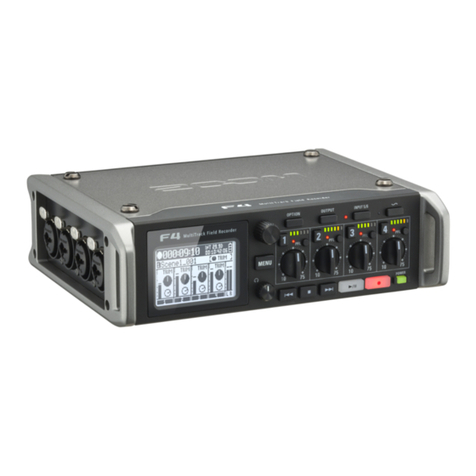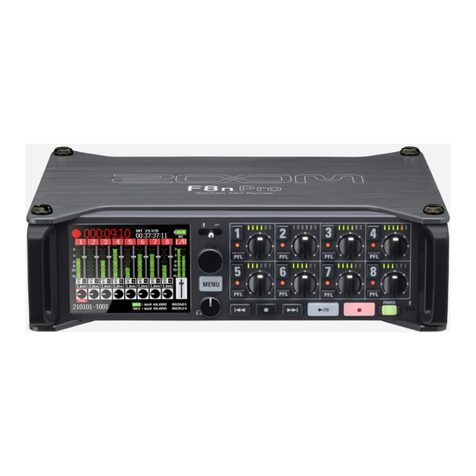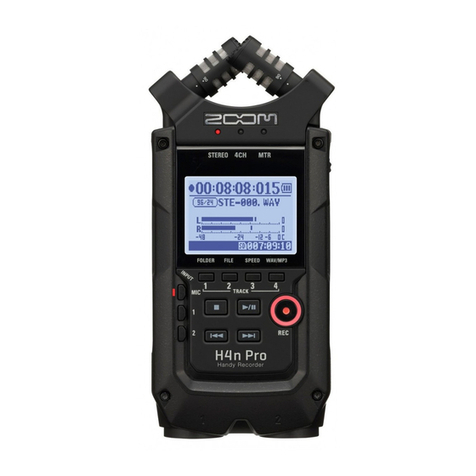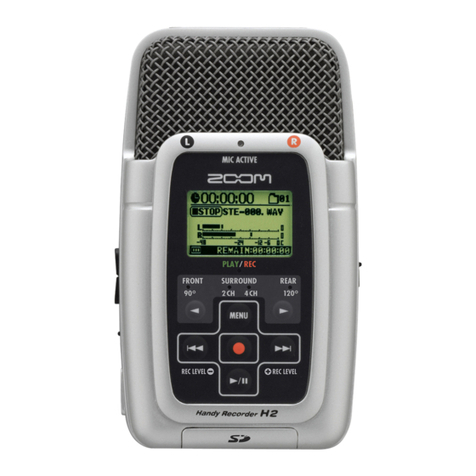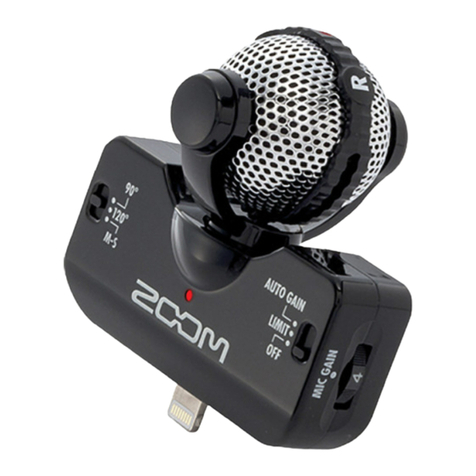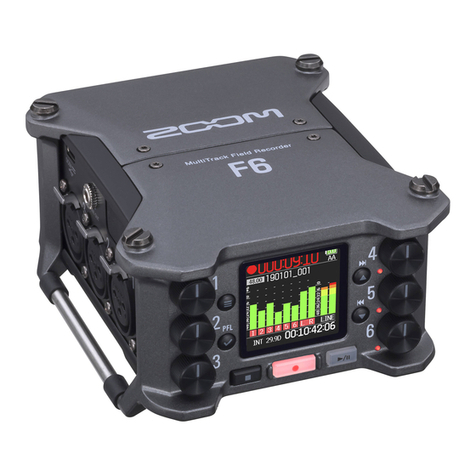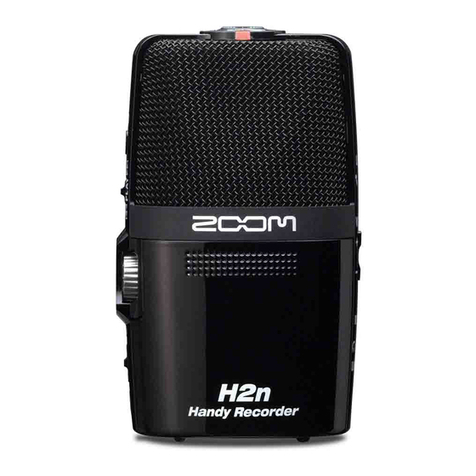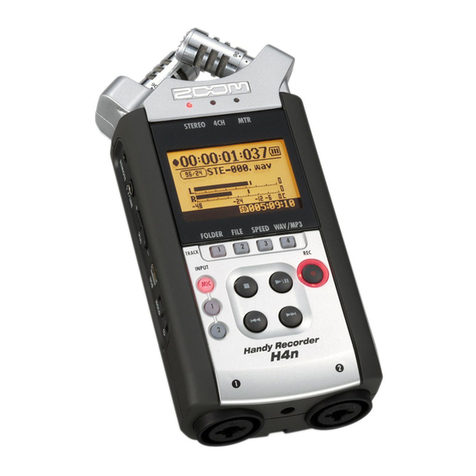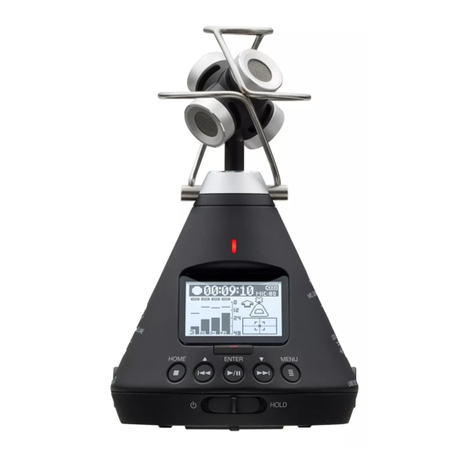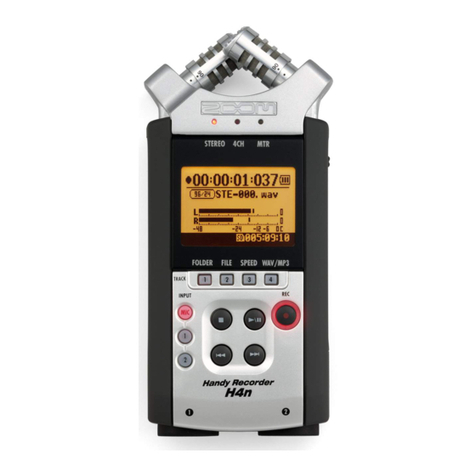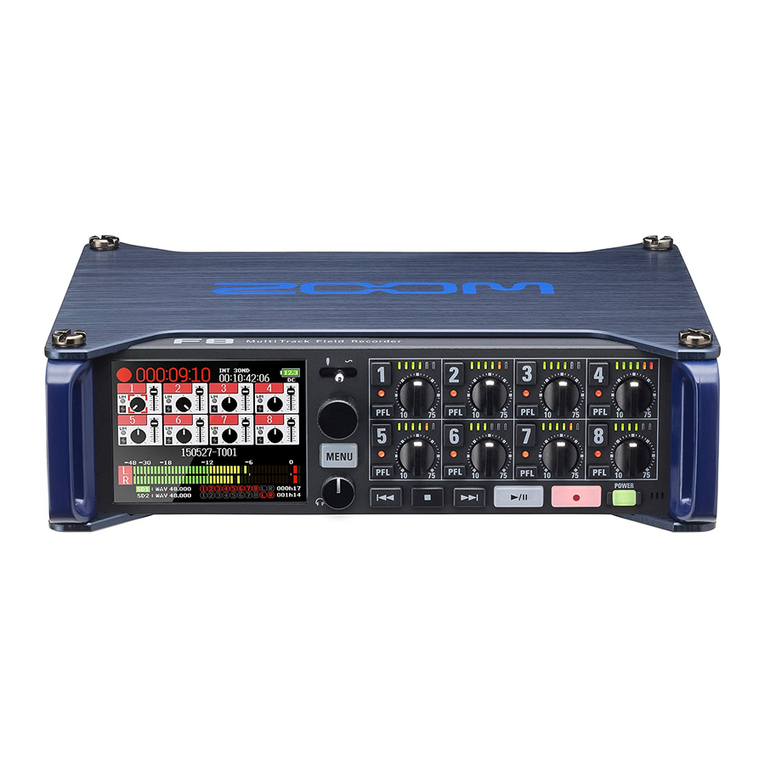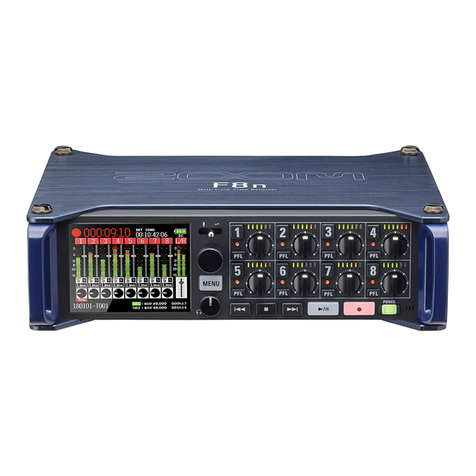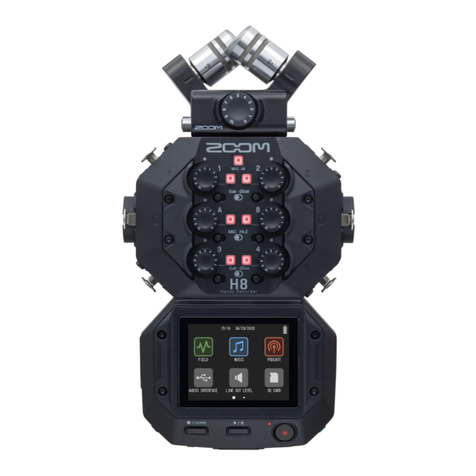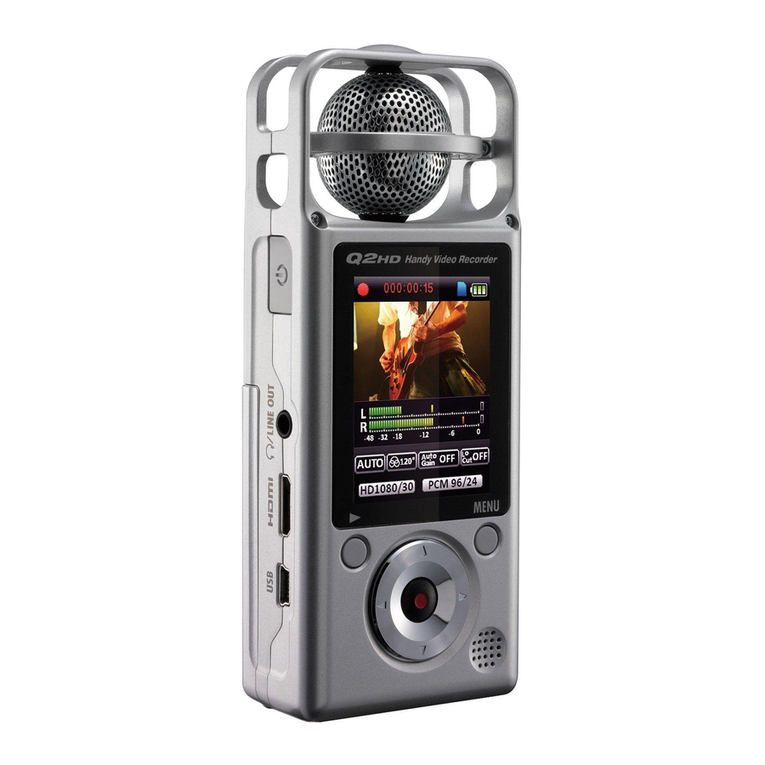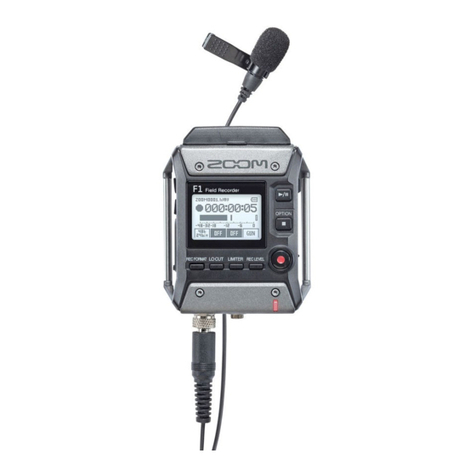
4. TRANSFERRING THE FILES
Okay! So what now? You’ve recorded all the
stuff you want but now you gotta edit the whole
thing.
Worry not, the Zoom H5 records all of its les
on an SD card so transferring the les is super
easy (unless you’re a MacBook user without a card
reader or USB-hub, but in that case nothing in life
will be super easy for you). Alternatively you can
also use the USB cable to transfer the les to your
computer.
Maybe this is a good place to touch upon
formats, briey. The Zoom H5 is capable of
recording in both WAV and MP3. Basically, WAV
is a more detailed format with a higher quality but
it also has a greater le size. MP3 is lower quality,
but smaller in size. We won’t bother you with all
the ins and outs of kHz and kbps but the main
thing you should take away from this is that the
higher the kHz (kilohertz) and the higher the kbps
(kilobytes per second) the higher the overall quali-
ty, but also the greater the le size will be.
Generally speaking we’d advise you to stick with
the standard WAV 44.1 kHz 16bit, but if you want
to up your game you can switch to a higher stan-
dard as following: click on the menu button, scroll
to the RECORDING tab, click on the scroll button
to enter the tab, and click it another time to select
REC FORMAT.
Again, please note that recording in MP3 will result
in one track, regardless of the amount of channels
used. Basically, the Zoom H5 will merge all the
sounds into one le as opposed to WAV. While
recording in WAV the recorder saves the sound of
each channel separately on the SD-card allowing
far greater creative control in the editing process.
Also, please note that these separately saved
WAV-les can only be seen on the computer,
not on the Zoom H5 itself.






